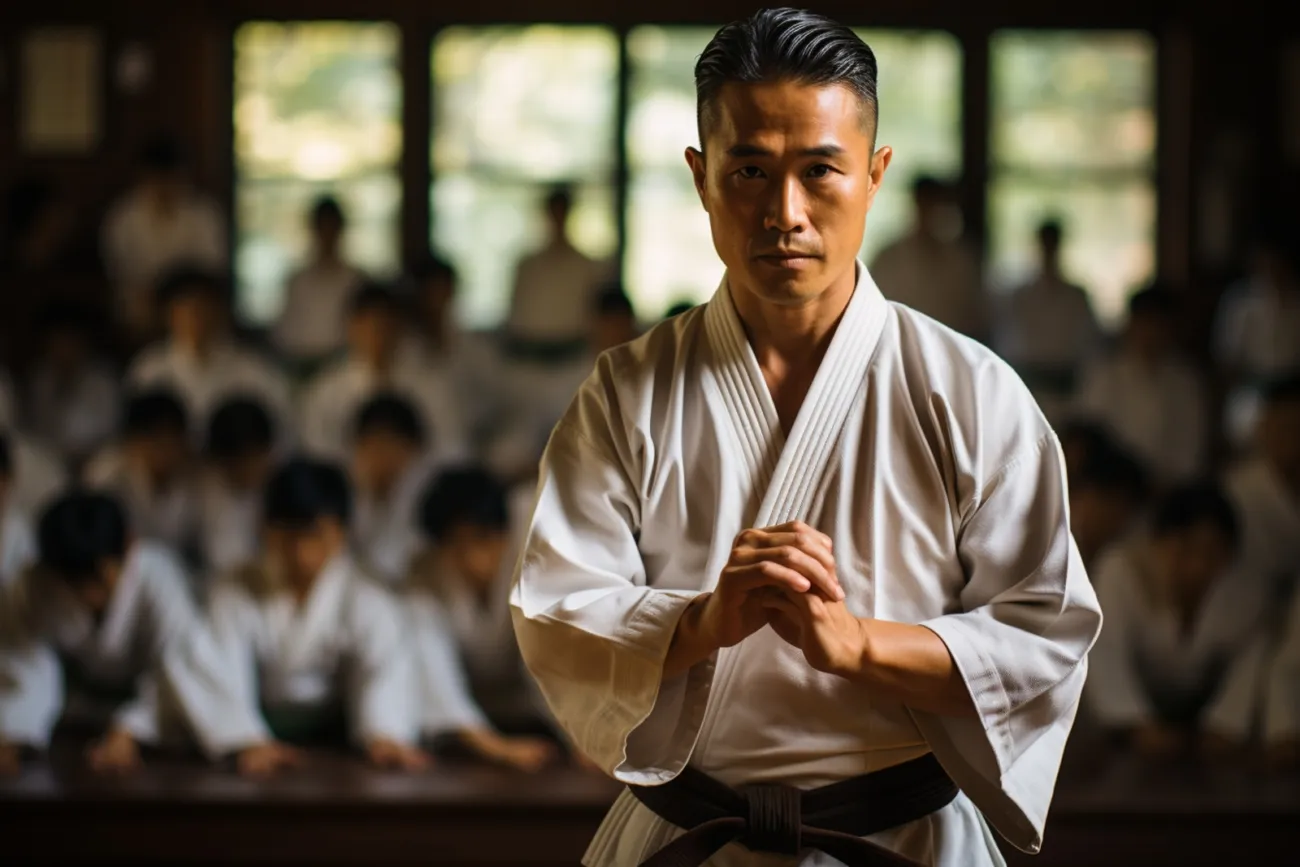The dojo is silent, save for the familiar rhythmic sound of synchronized breathing. A figure at the front, an embodiment of calm and strength, leads the class. This is the Sensei, the guide on the path of Karate. But what does ‘Sensei’ truly mean? Let’s unravel this together.
In the world of Karate, ‘Sensei’ is more than just a title. It’s a badge of honor, a testament to mastery and dedication. While the term may seem enigmatic to the uninitiated, its meaning is quite straightforward. If you’ve always wanted to know the meaning of the word Sensei in Karate, you’ve come to the right place.
Sensei meaning
The term ‘Sensei’ is deeply rooted in Japanese culture and tradition, and its application extends beyond martial arts. Translated, ‘Sensei’ means ‘one who was born before,’ implying a person who has walked the path of life and gained wisdom and experience before others. In martial arts, ‘Sensei’ is more than just a teacher or instructor; it is a title of respect and honor given to someone who has mastered their craft and can guide others on the same path. The term ‘Sensei’ is not only about seniority in age or rank but also encapsulates the qualities of leadership, knowledge, and respect for the martial art form. In reverse, when we say ‘meaning Sensei,’ we seek the essence of what it means to be a Sensei – the embodiment of wisdom, experience, and guidance in the martial arts journey.
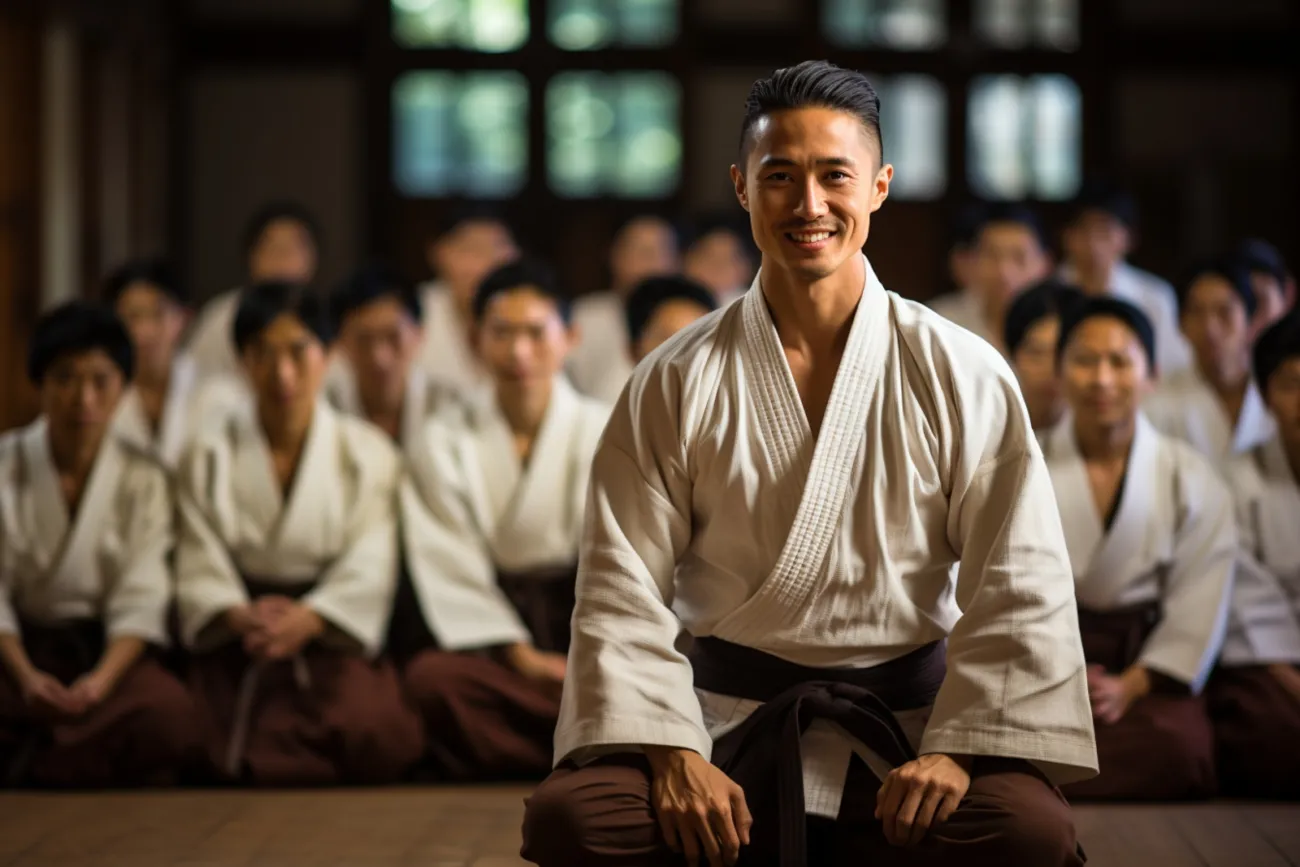
What Is a Sensei in Karate?
As we’ve mentioned earlier, sensei in karate is a name for a karate teacher. However, it is important to note that the name is usable only from the student’s perspective. Most of the time, people use sensei and the first or last name of the teacher they are addressing.
It takes time and great effort to become a sensei since it’s a title that saddles a person with several roles aside from teaching. In a karate environment, a sensei always occupies leadership positions, serving others selflessly. A sensei tends to perform better in crucial areas of life and faces challenges with courage.
They care about the problems of others, counsel people, coach and help their students overcome hurdles. They understand and apply the principles of human performance during training sessions. They ensure safety during training sessions and can render first aid skillfully whenever needed.
A sensei is intelligent and can contemplate circumstances to identify every possible outcome. He always considers several alternatives before finally choosing the best one. A sensei updates himself about new knowledge from time to time.
A true sensei is humble, patient, and forgives easily. An ideal sensei has excellent human relations skills and treats everyone with respect. He is honest and, therefore, uses an honorable attitude. He serves as a perfect role model in all areas of life. A sensei is fair to everyone and can promote peaceful coexistence.
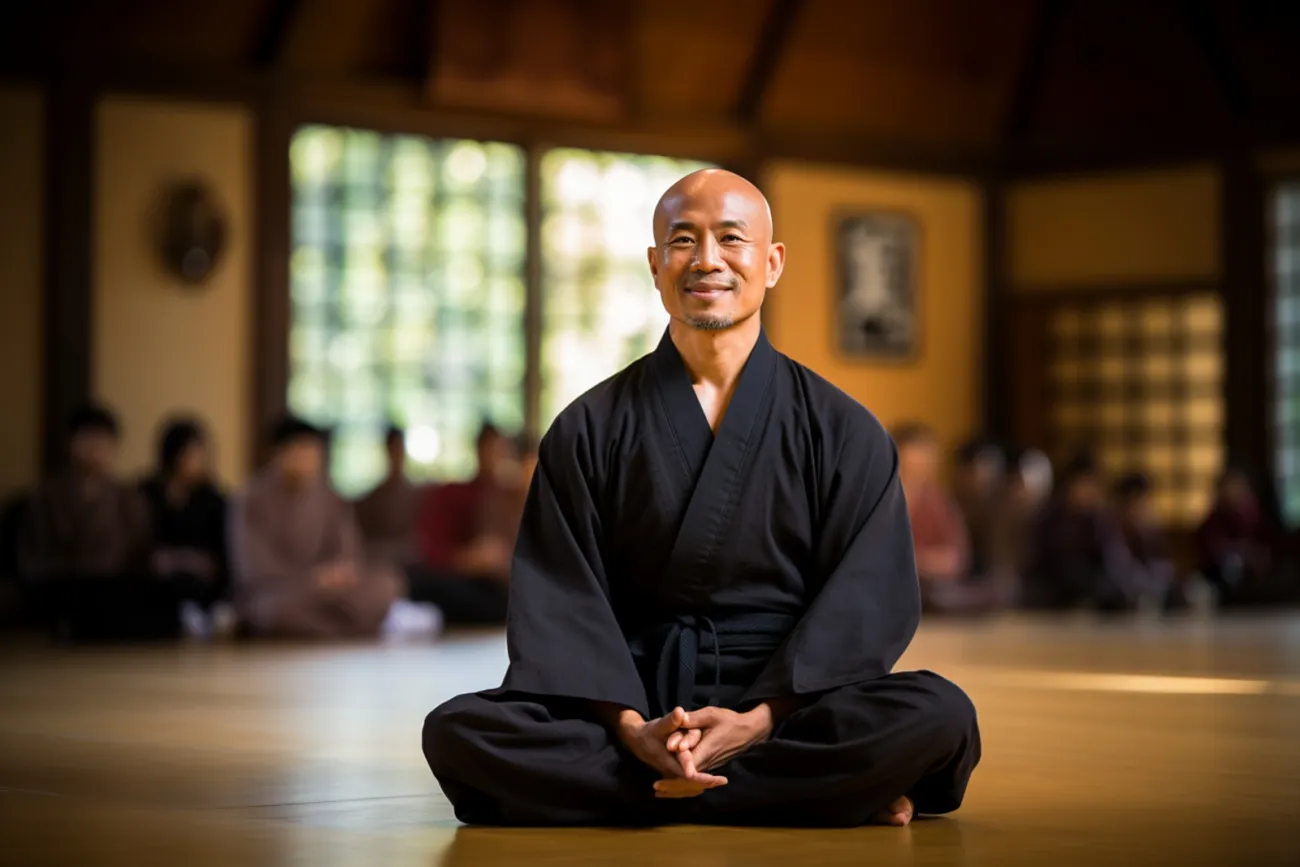
As we delve into the paramount role of a Sensei in Karate, taking a more practical turn to enhance your training experience is equally important. A Sensei guides, steers, and empowers you to attain martial arts goals. But what about those critical moments in the ring? Luckily, I’ve reviewed the Karate Sparring Gloves that will protect you and further boost your performance. Your read here offers an insightful perspective and becomes an extension of your Sensei’s teachings specifically for sparring.
The Journey and Responsibilities of a Sensei
Becoming a Sensei is not a journey taken lightly. It is a path marked by dedication, discipline and a deep understanding of the art of Karate. The title ‘Sensei’ is not simply handed out; it is earned through years of rigorous training, continuous learning, and a commitment to mastering the art.
A Sensei’s responsibilities extend far beyond teaching Karate techniques. They are mentors, guiding their students not just in Karate but also in life. They instill respect, discipline, and perseverance in their students. They are expected to lead by example, embodying the principles and spirit of Karate in their everyday lives.
The title ‘Sensei’ carries a deep sense of respect and reverence. It signifies a level of mastery and understanding of Karate that few attain. When a student addresses their teacher as ‘Sensei’, it is an acknowledgment of their skill, knowledge, and dedication to the art of Karate.
In the context of ‘meaning Sensei’, it is about understanding the essence of being a Sensei. It’s about recognizing the journey they’ve undertaken, the responsibilities they carry, and the respect they’ve earned. It’s about appreciating their role in guiding their students on the path of Karate.
What Is the Difference between Sensei and Senpai?
Although the two terms, sensei and senpai, have similar meanings, you will discover the differences between these two words when you examine them closely. English speakers are likely to interchange these two words’ meaning and usage. We will explain the differences between these two words quickly, and then summarize examples of these differences in a simple table.
Sensei is the proper title that karate students are taught to use while referring to their teachers. This title gives students the privilege to show respect to their teachers each time they address them. It is wrong for karate students to address their teachers with the word ‘senpai.’
Senpai is used when a karate student addresses a master or senior karate student. Also, it’s proper for you to use senpai for your mentors. However, if your mentor is equally your teacher, then you must use sensei instead of senpai.
| Sensei | Senpai |
| The title is reserved only for teachers or instructors. | You can use it for senior colleagues, mentors, or even a friend who you respect. |
| It indicates a high level of authority difference between the addresser and the addressee | The level of authority difference between the addresser and the addressee can either be low or high. |
What Is a Karate Student Called?
By now, you already know what we call a Karate teacher, but maybe you don’t know the name that people call karate students. The name that people call karate students varies according to the country. For instance, a Japanese can use the name ‘gakusei’ for a karate student. Generally speaking, you can call karate students by the word that translates directly into a student in your country.
However, you should note that gakusei and other words that translate into students are not frequently used in the karate schools, despite their correctness. Karateka prefers using names that indicate the relation between the addresser and the addressee. So if you are learning karate under a teacher, you should expect your teacher to call or refer to you by your last name + Kun. Kun is a Japanese title that gives authority to the person using it, so sensei use it often when referring to their students. Rarely a teacher can call you using your first name + Kun instead of your last name + Kun.
The title ‘kun’ also has some restrictions on its usage. You must never call your senior karate colleague using the ‘kun’ title. Doing so will make you assume an authority higher than your senior colleague’s, which is false. The title is mainly for boys, but you can use it for girls also. Girls can use the title towards boys of equal rank without implying a false meaning.
What Are the Conducts of Karatekas in the Dojo?
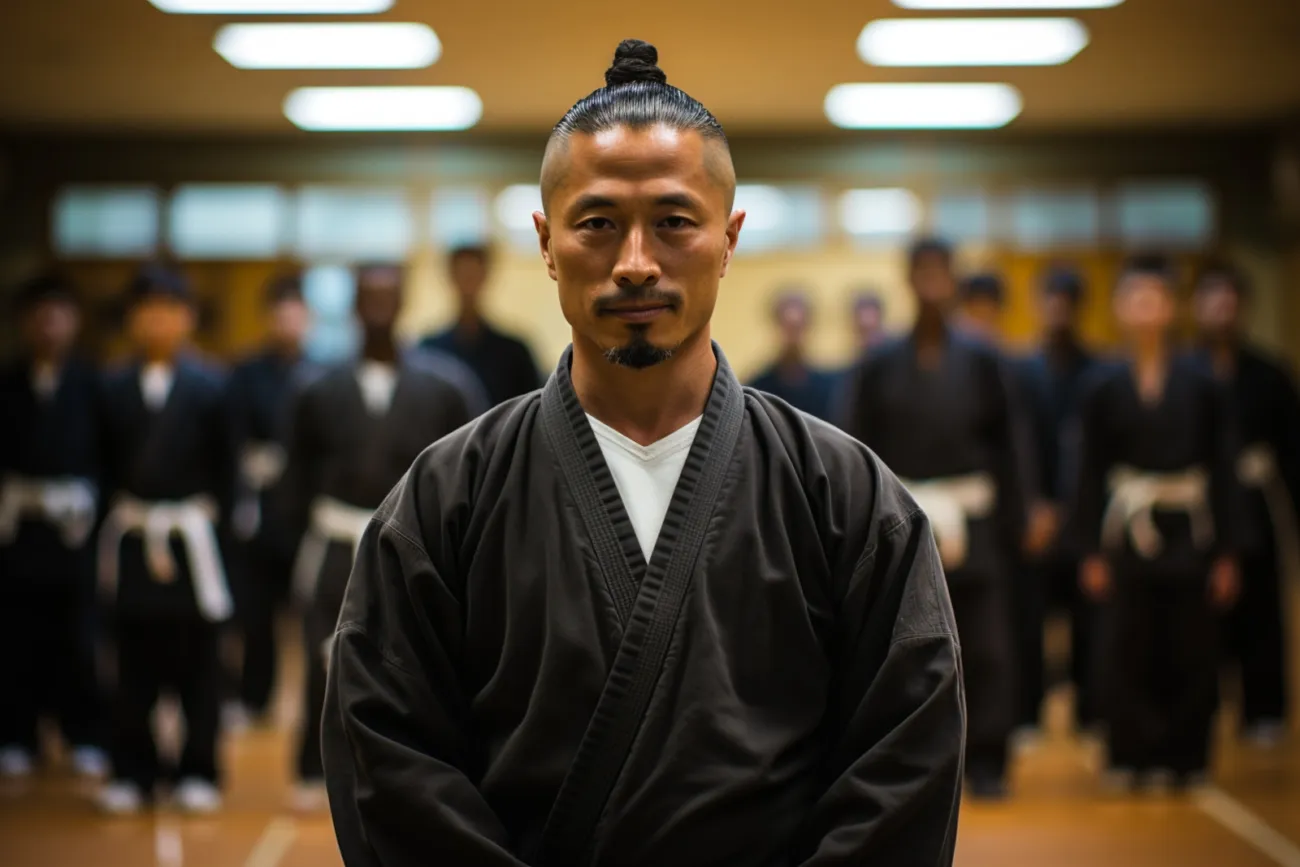
The dojo, or karate school, is more than just a place for training; it’s a sacred space where respect and discipline are paramount. As the leader, great teacher and guide, the Sensei plays a crucial role in maintaining this sanctity and ensuring the proper conduct of Karatekas, or karate masters and students.
A Sensei enforces the rule that Karatekas must not wear shoes in the dojo, symbolizing respect for the training ground. They also instill the practice of cleaning the dojo at the end of every training session, a ritual that acknowledges its sacredness. The Sensei also teaches and reinforces bowing upon entering or exiting the dojo as a sign of respect to the dojo and the art of Karate.
Eating or chewing in the dojo is strictly prohibited, a rule enforced by the Sensei to maintain the sanctity of the space. However, drinking water during training is allowed, recognizing the physical exertion involved in the practice.
The Sensei also ensures that Karatekas do not use the dojo outside the stipulated hours of training without permission. This rule maintains order and emphasizes respect for the shared space and the Sensei’s authority.
Punctuality is another important conduct enforced by the Sensei. Karatekas are expected to arrive on time for lessons. If a student cannot attend the opening prayer, they must sit formally close to the entrance and wait for a signal of permission from the Sensei before entering.
In the dojo, the Sensei also teaches the proper way of sitting – Seiza, a formal way of sitting in Japanese culture. However, exceptions are made for those with disabilities or knee injuries, who can sit cross-legged. Reclining or stretching out is strictly prohibited, emphasizing the importance of maintaining a respectful posture in the dojo.
Through these rules and their enforcement, the Sensei shapes not only the physical but also the moral and ethical aspects of a Karateka’s journey, reinforcing the deep respect and discipline inherent in the practice of Karate.
What Are the Popular Karate Styles?
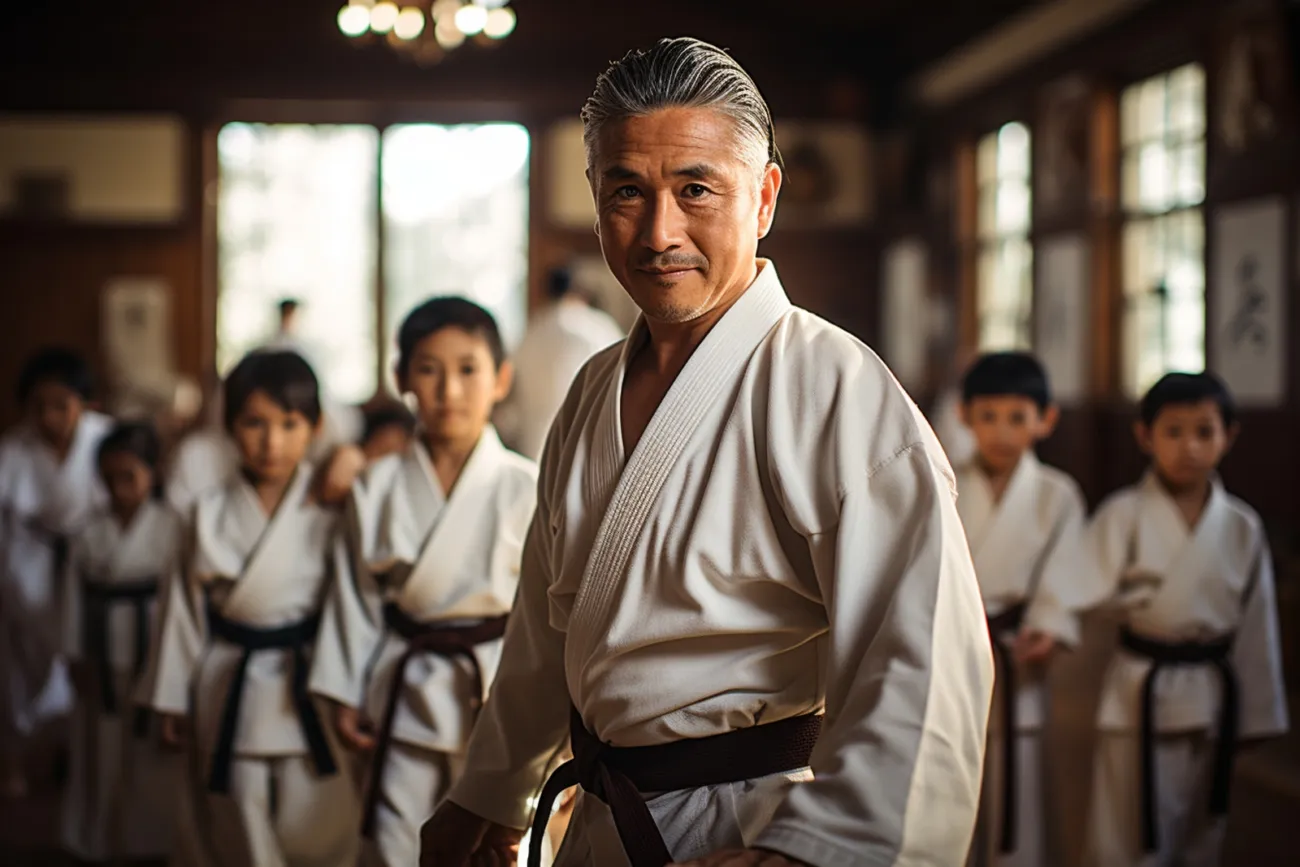
If you aspire to join a karate school, you need to know the various karate styles to choose the one that suits you most. We will mention some popular karate styles and their major features here. Let’s start.
Goju-ryu
This style of karate uses the principles of hardness and softness. It’s a style that teaches technics like hand strikes and closed fist punches. Goju-ryu is very popular in many martial arts movies. Goju-ryu focuses on breathing techniques and promotes mind and body harmony. Those who practice this style utilizes flowing movements, circular movements, and angular movements majorly.
Shotokan
Shotokan karate produces powerful punches and kicks using the upper and lower parts of the body. The practitioners defend themselves with straight line strikes and attack with various parts of the body, including hands, arms, fingers, legs, elbows, knees, and feet. Those who practice shokotan always focus on breathing, speed, and balance. Its practitioners utilize long stances and long-range techniques during strikes.
Shito-ryu
Shito-ryu is a style that emphasizes speed and fluidity rather than power. Shito-ryu involves many upright stances that make it look like Sumo wrestling. The practitioners of this karate style use closed-fist punches, elbow strikes, and kicks. Those practicing shito-ryu karate utilize soft strikes more than hard ones while attacking their opponents.
Wado-ryu
This karate style focuses on the technics for evading attacks from opponents. By shifting the body, the practitioners of Wado-ryu can reduce the force coming from opponents. Wado-ryu employs punches and kicks while attacking opponents. Short and natural stances are parts of the predominant features of Wado-ryu. Through spiritual discipline and peace of mind, the practitioners of this style sharpen their minds to foresee their opponent’s attacks.
Everything you need to know about the Sensei meaning
What is the word ‘Sensei’ in martial arts?
‘Sensei’ is a Japanese word often translated into English as ‘teacher.’ In the context of martial arts, it can refer to a coach or instructor who has achieved a certain level of mastery in their discipline such as Karate, Judo, or Aikido.
How the word ‘Sensei’ is used?
A typical example would be, “Sensei ni rei,” which translates to, “Bow to the teacher.” Here, ‘Sensei’ indicates the person giving instruction and guidance in the martial art class.
How the Japanese word Sensei relate to the concept of a teacher in English?
While ‘Sensei’ is also a teacher, the term carries a stronger connotation of respect and authority given the tradition and discipline associated with Japanese martial arts. Though the term ‘teacher’ in English may also carry the notion of respect, it doesn’t explicitly imply the same importance of hierarchical dutifulness as ‘Sensei’.
The ‘Sensei’ often holds the black belt rank – a symbol of mastery and skilled education, in martial arts. Therefore, achieving the black belt means one is also capable of teaching and thus can be called ‘Sensei’.
What is the translation of ‘Sensei’ in Spanish?
The translation of ‘Sensei’ in Spanish commonly stays the same. Like many borrowed words from another language, it gets adopted into the language and is used in some Spanish-speaking martial arts schools to accord respect to an accomplished martial arts teacher.
Is the use of ‘Sensei’ strictly for martial arts teachers?
Traditionally, ‘Sensei’ is not strictly for martial arts teachers in Japanese society. It’s also used out of respect for professionals like education and arts, doctors and politicians.
How does the use of the term ‘Sensei’ relate in other areas of Japanese society?
Aside from martial arts, the term ‘Sensei’ is used commonly to address skilled professionals in Japanese society. It also addresses doctors, politicians, artists, and educators. This is because in Japan, ‘Sensei’ literally means ‘one who came before.’
